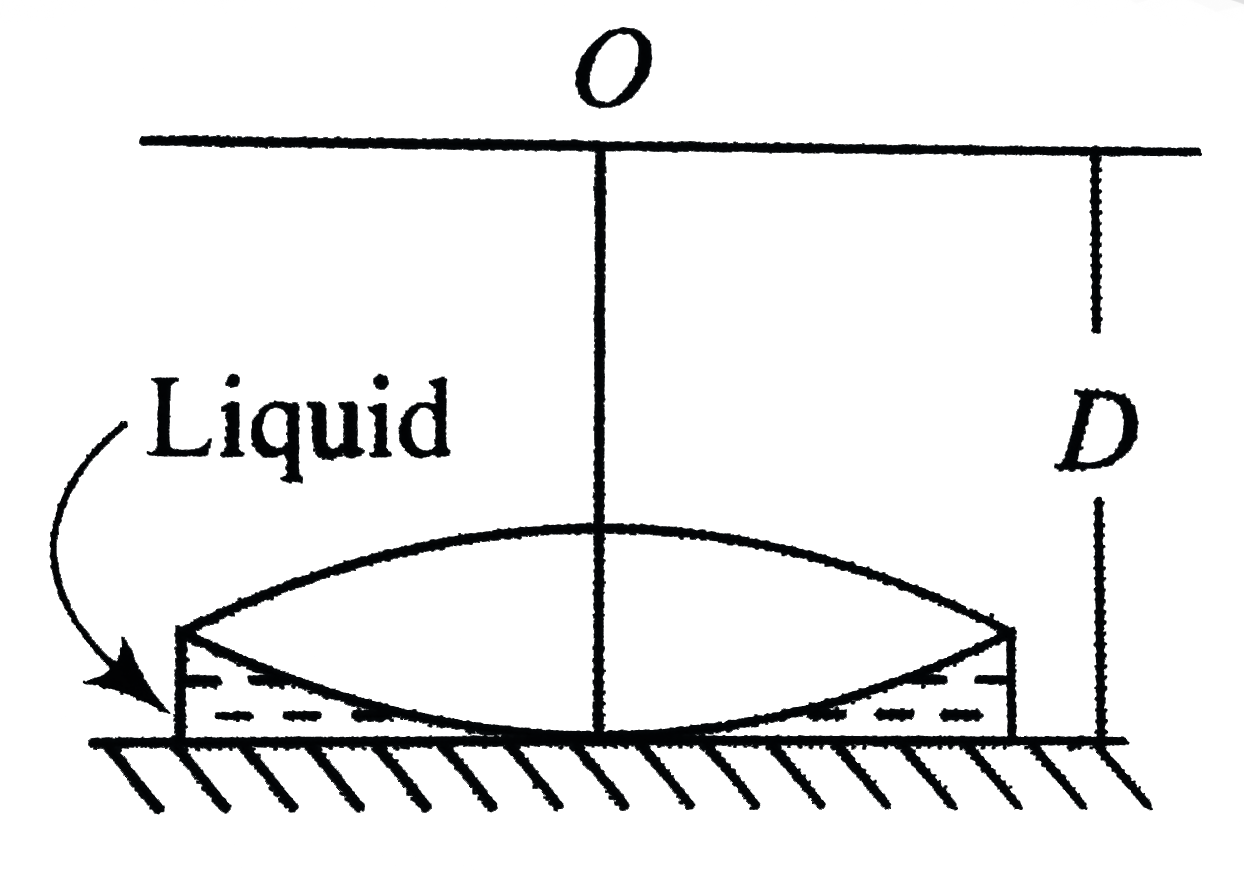The focal length of equiconvex lens of retractive index, μ=1.5 and radius of curvature, R is
R1.5
1.5R
R
1.5R
The correct Answer is:C
To find the focal length of an equiconvex lens with a refractive index (μ) of 1.5 and radius of curvature (R), we will use the lens maker's formula. Here’s a step-by-step solution:
Step 1: Write down the lens maker's formula
The lens maker's formula is given by:
1f=(μ1μ2−1)(1R1−1R2)
Step 2: Identify the parameters
For an equiconvex lens:
- The refractive index of the lens (μ1) = 1.5
- The refractive index of air (μ2) = 1 (approximately)
- For an equiconvex lens, the radius of curvature for the first surface (R1) = R and for the second surface (R2) = -R (the negative sign indicates that the second surface is concave relative to the incoming light).
Step 3: Substitute the values into the formula
Substituting the values into the lens maker's formula:
1f=(1.51−1)(1R−1−R)
Step 4: Simplify the equation
Now simplify the equation:
1. Calculate 1.51−1:
1.51−1=0.5
2. Calculate 1R−1−R:
1R−1−R=1R+1R=2R
3. Substitute these results back into the equation:
1f=0.5⋅2R
Step 5: Further simplify
Now simplify the right side:
1f=1R
Step 6: Solve for the focal length (f)
Taking the reciprocal gives us:
f=R
Final Answer
Thus, the focal length of the equiconvex lens in terms of the radius of curvature R is:
f=R
---
The lens maker's formula is given by:
For an equiconvex lens:
- The refractive index of the lens (μ1) = 1.5
- The refractive index of air (μ2) = 1 (approximately)
- For an equiconvex lens, the radius of curvature for the first surface (R1) = R and for the second surface (R2) = -R (the negative sign indicates that the second surface is concave relative to the incoming light).
Substituting the values into the lens maker's formula:
Now simplify the equation:
Now simplify the right side:
Taking the reciprocal gives us:
Thus, the focal length of the equiconvex lens in terms of the radius of curvature R is:
Topper's Solved these Questions
Similar Questions
On a horizontal plane mirror, a thin equiconvex lens of glass is placed and when the space between the lens and mirror is filled with a liquid, an object held at a distance D which is 30cm vertically above the lens is found to coincide with its own image as shown in Figure. If equiconvex lens of glass has refractive index μ=1.5 and radius of curvature R=20cm then find refractive index of the liquid.

View SolutionThe convex side of a thin concavo-convex lens of glass of refractive index 1.5 has a radius of curvature of 20cm. The concave surface has a radius of curvature of 60cm. What is the focal length of the lens? The convex side is silvered and placed on a horizontal surface. What is the effective focal length of the silvered lens? The concave part is filled with water with refractive index 1.33. What is the effective focal length of the combined glass and water lens? If the convex side is silvered what is the new effective focal length of the silvered compound lens?
View Solution
Knowledge Check
The focal length of a biconvex lens of refractive index 1.5 is 0.06m. Radii of curvature are in the ratio 1:2. Then radii of curvature of two lens surfaces are
A0.045m,0.09mB0.09m,0.18mC0.04m,0.08mD0.06m,0.12mAssertion : The focal length of an equiconvex lens placed in air is equal to radius of curvature of either face.
Reason : For an equiconvex lens radius of curvature of both the faces is same.AIf both assertion and reason are true and reason is the correct explanation of assertion.BIf both assertion and reason are true and reason is not the correct explanation of assertion.CIf assertion is true but reason is false.DIf both assertion and reason are false.
A plano-convex lens (focal length f2, refractive indexμ2, radius of curvature R) fits exactly into a plano-concave lens (focal lengthf1 refractive index μ1, radius of curvature R). Their plane surfaces are parallel to each other. Then, the focal length of the combination will be :
View SolutionA plano convex lens is made of glass of refractive index 1.5. The radius of curvature of its convex surface is R. Its focal length is
View SolutionThe adjacent figure shows a thin plano-convex lens of refractive index μ1 and a thin plano-concave lens of refractive index μ2, both having same radius of curvature R of their curved surfaces. The thin lens of refractive index μ3 has radius of curvature R of both its surfaces. This lens is so placed in between the plano-convex and plano-concave lenses that the plane surfaces are parallel to each other.
The focal length of the combination is

View SolutionThe plane surface of a plano-convex lens of refracting index 1.5, is silvered. The radius of curvature of curved surface is R. Find the focal length of the mirror thus formed.
View SolutionThe focal length of an equi-concave lens is 34 times of radius of curvature of its surfaces. Find the refractive index of the material of lens. Under what condition will this lens behave as a converging lens?
View SolutionA plano-convex lens has refractive index 1.6 and radius of curvature 60 cm. What is the focal length of the lens?
View Solution
